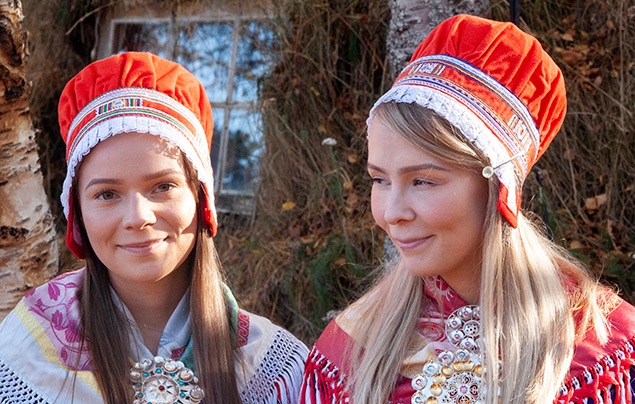When you hear the word “frozen,” what’s the first thing that comes to mind? For me, it isn’t temperature. I think of two royal sisters, a talking snowman and reindeer. Lots and lots of reindeer. (Some say they’re even better than people.)
But now when I hear “frozen,” I also think of the Sámi people.
The Northuldra, a fictional indigenous group depicted in Disney’s “Frozen 2”, are actually based on the real-life Sámi. (Which is not short for Samantha, much to a talking snowman’s chagrin.)
There are over 75,000 Sámi (or Saami) people scattered across parts of Russia, Sweden, Finland and, of course, Norway. Located in northern Europe, Norway is surrounded by water and is covered with mountains, glaciers and fjords. The breathtaking scenery and unique terrain form the backdrop to the Sámi’s way of life, a culture that dates back thousands of years.
Some things never change for the Sámi people, including their traditional livelihoods of fishing, selling handmade crafts and hunting. Reindeer herding remains one of the most important aspects of the Sámi’s culture; it provides transportation and materials for clothing, traditional crafts and food.
Of the approximately 7,300 languages in use around the world today, there are 10 languages that are unique to the Sámi. They share similarities, but each language has its own writing system. For example, if you want to call for your favorite reindeer in Northern Sámi, you would say, “boazu!” But if you found yourself in a region that spoke Inari Sámi, then “puásui” would be the correct choice. Thanks to organizations like the Norwegian, Finnish and Swedish Bible societies working together, Bible translation work is well underway for some Sámi languages.
Almost 75% of Sámi speak Northern Sámi, which makes it the largest language group in this population. Northern Sámi has a complete Bible in their language, and a new version was published in 2019. Lule Sámi has a complete New Testament. Inari Sámi and Skolt Sámi both have portions of the New Testament. Other Sámi languages are in various stages of Scripture translation, and some like South Sámi and Kildin Sámi don’t have any Scripture.
SOURCE: Christian Post, Emily Lupfer
All Content & Images are provided by the acknowledged source
